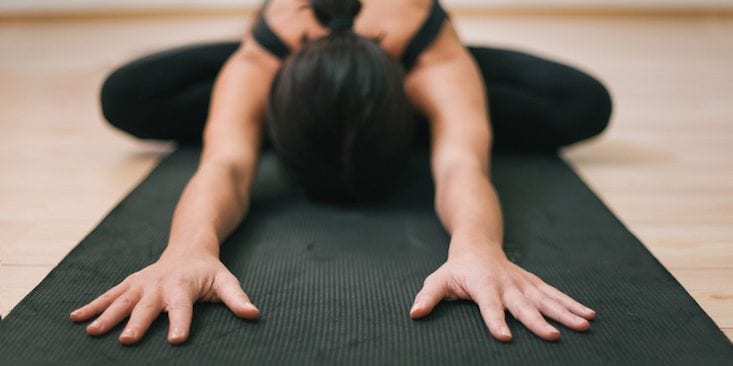Fibromyalgia is a chronic pain condition that affects your bones and muscles. While it’s actually very common, it’s often misunderstood and misdiagnosed, partially because it’s not clear what causes it, there’s no cure as of now, and the symptoms can be somewhat vague, marked most commonly by consistent and general muscle and joint fatigue and aching. Having seen my mom battle fibromyalgia firsthand, she’s described to me the overwhelming sense of exhaustion that she sometimes endures. Still, despite her struggles, she has found ways to manage the chronic pain. This is, of course, a major part of living with fibromyalgia: learning how to treat it through diet, rest, medical guidance, and exercise. As counterintuitive as it may seem, movement is actually one of the best ways to manage the condition, so working out with fibromyalgia is totally possible and is certainly encouraged. It’s all about finding the workout that feels supportive for you and your body.
“Try to keep moving — that’s my motto for patients,” Maura Daly Iversen, PT, DPT, SD, MPH, spokesperson for the American Physical Therapy Association, told Prevention. And, as my mom says, it really is important to get yourself up and moving, even though you don’t always want to. Here are six gentle ways to move without pushing yourself or your body past your limits.
1. Walking
A simple walk is one of the best ways to keep yourself moving. Try to fit one in when you get up in the morning, or use your lunch break to make your way around the park.
A simple walk around the block helps bring blood and oxygen to the muscles and joints, and can boost your energy and your overall mood, both of which can be exhausted as a result of fibromyalgia and chronic pain.
2. Tai Chi
Tai chi is considered a meditative practice focused around breath and intentional movement of one’s energy.
Studies show tai chi is an effective and positive exercise treatment for fibromyalgia, since it’s a low-impact activity and promotes overall wellness through deep breathing and muscle control.
While there are classes and groups out there, the basics are also available online if you want to give it a shot at home.
3. The Feldenkrais Method
The Feldenkrais Method is a type of movement exercise that is meant to assist in “reorganizing” the connections between the brain and body to improve both physicality and psychology.
Much of the practice is slow, repetitive, and deeply intentional movement (think laying down and concentrating on very slowly moving the tip of your tailbone clockwise), so as to cultivate a mind-body connection through micro-movement of the joints and muscles.
The exercises are intentionally therapeutic and intended to improve your motor cortex (a part of the brain that plans and executes your voluntary movement), and therefore helps with pain, stress, and movement efficiency.
4. Gentle Yoga
Similarly, gentle yoga and stretching is helpful for overall joint and muscle health, and can reduce the symptoms of stiffness, aches, and pains.
Intentionally guiding your movement with your breath helps you learn ways to move with both grace and efficiency.
5. Small Weights
While weightlifting might be out of the question depending on the severity of your symptoms, a few reps of a three- or five-pound weight can help lengthen and strengthen muscles, promoting flexibility and joint rotation.
Perhaps you can also try strapping on small ankle weights while you go for your walks, even if you just decide to stroll back and forth in your own home.
6. Body-Mind Centering
I learned about Body-Mind Centering as a dancer, and the method of movement is described on their website as “an integrated and embodied approach to movement, the body, and consciousness.” Developed by Bonnie Bainbridge Cohen, it’s an experiential method that works by utilizing movement, touch, voice, and mindfulness as a way of exploring embodiment.
In layman’s terms, it’s a way of safely and deeply exploring how your own body moves and works. The method helps you see that your own intuitive movement is your best teacher, and it can offer you the most guidance when it comes to the limitations and needs of your own physicality.
All in all, remember that moves in one unique way or another. You just have to find the way that works best, and most supportively, for you.










![[Video] How to get rid of bed bugs in Toronto](https://www.thehowtozone.com/wp-content/uploads/2019/10/maxresdefault-2-100x70.jpg)


